December 21, 2012
Air Date: December 21, 2012
FULL SHOW
SEGMENTS

Why We Have Winter
View the page for this story
Judith Black, an award-winning story teller for more than twenty years, relates the ancient Greek myth of the goddess Demeter and her daughter Persephone (per-SEFF-uh-nee), and how their tale explains the persistence of winter. (10:45)

Calming the Wind
View the page for this story
Guy Peartree recounts the Siberian legend of Kutora (koo-TOR-uh), Lord of the Wind, and how only a good and obedient young maiden can appease the fierce winter winds. (11:15)
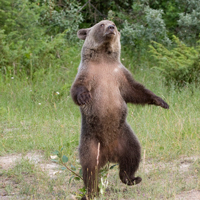
Ant and Bear Dance
View the page for this story
Dovie (DUH-vee) Thomason, a Lakota/Kiowa Apache storyteller, spins the tale of the great dance contest between an ant and a bear. It's all about the competition between darkness and light that takes place at this time of year, and why light ultimately wins. (08:50)
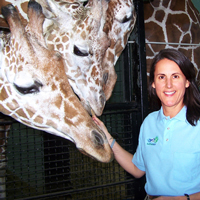
Animal Winter Behavior
View the page for this story
Guest zoologist Donna Fernandes tells host Steve Curwood about some of the various ways animals prepare for, adapt to and spend the cold, dark winter months. (06:00)
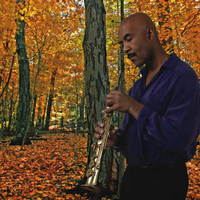
Playing for Animals and Humans
View the page for this story
Musician Stan Strickland has played his saxophone for animals at the zoo, and for humans in many clubs. He tells host Steve Curwood about how gorillas respond to jazz, and leads the audience in an African chant to call back the light. (08:40)
Show Credits and Funders
Show Transcript
HOST: Steve Curwood
GUESTS: Judith Black, Guy Peartree, Dovie Thomason, Donna Fernandes, Stan Strickland, Syd Smart
[THEME]
CURWOOD: From Public Radio International, this is Living on Earth. I'm Steve Curwood. The winter solstice is upon us and we mark the event with fiction, fantasy, and fable on the creation of the season.
BLACK: Persephone. Mother Demeter! Persephone!
PEARTREE: And so that day, Kutora , the lord of the winds, pulled back the winds. He had been appeased. And his people were saved.
BLACK: A very funny thing happens. Whenever you tell these stories, children always say, "Is this a story, or is this what really happened?" And you're faced with the idea of, what's the difference between science and folklore? I'm not sure.
CURWOOD: Storytellers Judith Black and Guy Peartree spin tales of the natural world and the way it came to be. Our annual celebration of storytelling is just ahead, this year marking the darkest time and the shortest days - and the eventual triumph of the light. That's this week, on Living on Earth. Stick Around!
[THEME]
ANNOUNCER: Support for Living on Earth comes from Stonyfield Farm.
Why We Have Winter
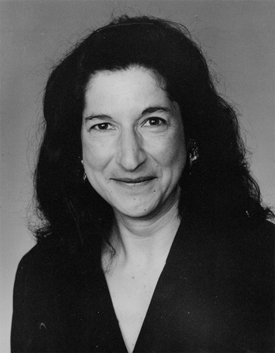
Storyteller Judith Black. (Photo: Judith Black)
CURWOOD: From the Jennifer and Ted Stanley Studios in Boston, this is Living on Earth. I'm Steve Curwood. From the Jennifer and Ted Stanley Studios in Boston, this is an encore holiday season edition of Living on Earth. I'm Steve Curwood.
The winter solstice is, of course, the shortest day of the year, coming around the time in December that the poet John Donne calls "the year's midnight.” Here in the northern hemisphere, as Donne puts it, "the sun is spent”, creeping above the horizon for barely 9 hours. Latin gives us the word 'solstice'. Roman astronomers noticed that as the sun - sol - climbs to its highest point in the sky, it seems to stand still or stop - sistere. And though it can be bitter and cold as well as dark - this also a time to celebrate. Now the days start to get longer and the good old reliable Earth is back on its way to giving much of the Northern hemisphere more than 15 hours of daylight by the end of June.
So, you probably remember that the reason our days change length is because the Earth tilts at an angle to the sun. The planet leans slightly on its axis like a spinning top frozen in an off-kilter position. So as the Earth orbits the sun, the northern hemisphere goes from inclining towards our star at the summer solstice to inclining away from it at the winter solstice. And the Earth also wobbles a bit on its axis, so over millennia the dates of the seasons actually switch.Right now, the axis is pointing at the North Star, Polaris, but in another 10,000 years or so, it will be pointing at Vega, the brightest star in the constellation Lyra, the musical lyre. Then winter for the Northern hemisphere will begin in June rather than December. But not to worry. Winter will be back to December, 10,000 years after that.
Of course the ancients had their ways of explaining Winter, and we’ll hear some of them today. We start with storytellers Judith Black, and Guy Peartree and musicians Stan Strickland and Syd Smart. They all appear in this encore presentation of a program recorded live at WGBH, Boston, a number of years ago, that dipped into the folk and animal lore around the change of the season. So throw another log on the fire, sit back and enjoy.
[APPLAUSE]
CURWOOD: Our theme today is the coming of the solstice, the turning of the year through its shortest day, winter time, and living through it. What better way to begin than the classic Greek myth of winter, Persephone and Demeter? Judith Black is a storyteller with 20 winters of experience weaving stories for adults and children. She teaches and performs all over the country and has a long list of awards to her name. Welcome, Judith Black.
[APPLAUSE]
BLACK: Hi, Steve.
CURWOOD: Persephone and Demeter is one of those "Why Things Are" stories: in this case, why there is a winter. From Judith Black, now, Persephone and Demeter.
BLACK: Demeter. The Goddess of all that grew. Had hair as thick and dark as the earth. Eyes like pools of water. Skin as soft as the silk that grew at the top of the corn. And when Zeus, the Lord of all, saw her, hutcha hutcha hutcha! And to put it biblically -- he knew her. And the fruit of their union was Persephone, the apple of her mother's eye. For as Demeter's hair was like the earth, Persephone's was as black as the night. And if Demeter's skin was as soft as the top of the corn, Persephone's was as soft as a windless day. And if her mother's eyes were like pools of water, Persephone's were like coals that grew for thousands of years in that earth, and how the mother loved the daughter and she never allowed her out of her sight. And as Persephone grew, her beauty lighted the afternoon and -- chh! -- broke through the crust of the Earth. So that Hades, the lord of the dead, one day perceived that light.
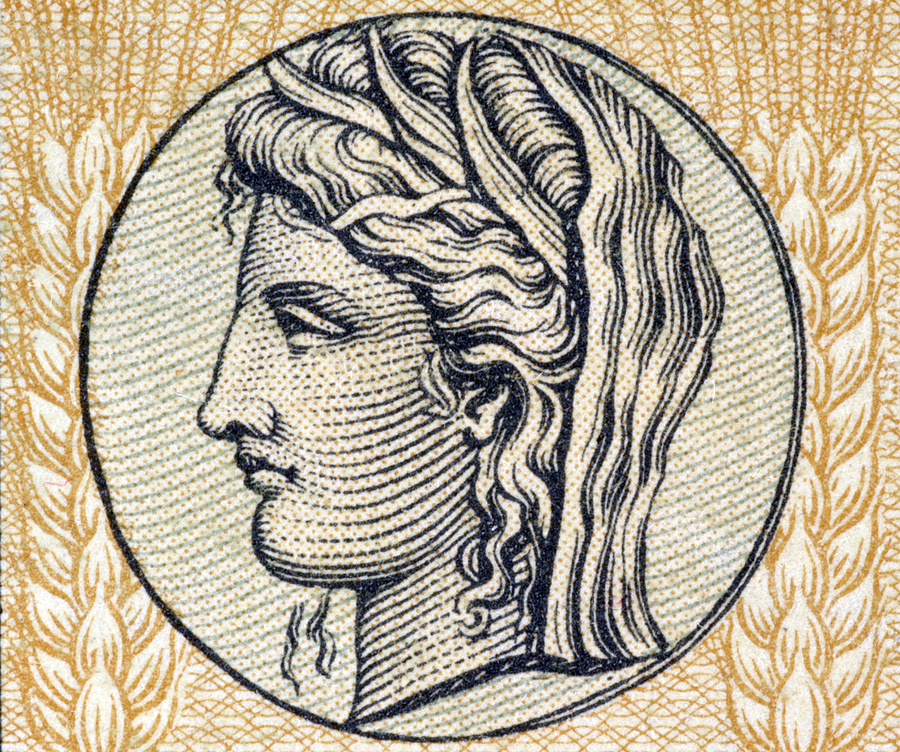
Demeter, the goddess of the harvest. (Bigstockphoto.com)
"Oh. Oh! If if if -- if she can bring light here, imagine what she's like in the flesh! This one I gotta have."
But when Hades looked carefully, he saw that the mother never took her eyes off the daughter. And so he waited and waited for his moment.
"Now, today, my daughter, you have learned how to sing out the sun. You have learned how to bring the riches from the Earth. Now that it is fall and the corn is at its highest, I will teach you the dance to bring on the fall rain. But not here among the corn. Well, child, go to the open field."
And when Demeter turned, Hades saw his chance. And he got into his chariot with 6 coal-black steeds, flame rushing from their nostrils they cracked through the surface of the Earth and it opened. He came, he grabbed Persephone in his hairy arms, and back through that crust which -- chhhhh! -- closed over them. So that a moment later, when the mother turned around to look for her: "Persephone? Persephone! Sun, where is she?"
"I was looking the other way."
"Wind? Where is my daughter?"
"I was blowing towards the north."
"Earth!"
"I was looking towards you, Demeter."
"Persephone."
And meanwhile, beneath the crust of the Earth in the world of the dead:
"You will bring light to my world. You, you, this shall be your kingdom, Persephone."
"My kingdom, are you kidding? You call this a color pattern? Black, white, black, white, a few grays? I wanna go back to my mother!"
"You will be queen of this kingdom. Here! Have a pomegranate."
"Are you kidding? You call that brunch?"
Now I don't know if she knew or if it was just instinct, but if you eat of the fruit of the dead, you become as the dead.
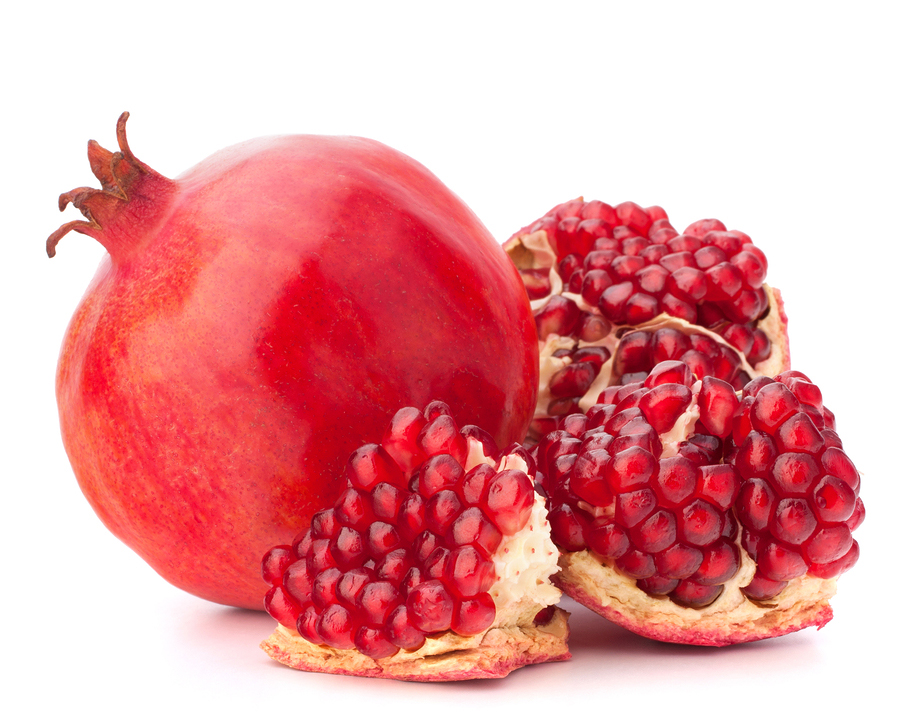
(Bigstockphoto.com)
"I'm not eatin' a thing."
And she stayed beneath that earth. But Demeter, the mother, began to search for her daughter.
"Persephone!"
And she had no heart to call the sun to warm the earth. And she had no desire to sing out the warmth. And her feet felt too heavy to do the dance of the fall rain. And the earth grew dry and cold, and it gave no nourishment. And the human beings began to die and they called out to the lord of all, Zeus. "Give the mother back her daughter!"
"Oh, come on, now, you know, Hades is just a boy. Boys will be boys, let him have Perse -- "
"We will all die! Give the mother back her daughter!"
"Now, now -- "
"Zeus! What is the Lord of all without those to worship him? Just a statue."
"Uh, well, since you put it that way. Hmm -- Hades! Hades!"
"Yes? Zeus?"
"Hades, you must return the girl to her mother."
"I don't wanna."
"You must."
"Oh come on, who do you think you are, my big brother?"
"Yes."
"Oh, you always pull rank on me this way."
"Return her!"
"If I must. "
"And thank goodness, I couldn't have stayed here another minute."
"Well, you must be hungry."
And in this moment of joy, Hades offered Persephone a pomegranate. And without thinking, the girl grabbed it and took a bite. And after she'd swallowed the meat from around the seeds -- ppt! ppt! ppt! ppt! -- 4 came from her mouth into the palm of Hades.
"Four. Four! That means you will come back to me for 4 months out of every year."
"Oh, darn!"
"Now, let us go back to your mother!"
And he grabbed her, put her in the chariot. They cracked through the crust of the earth. He set her down, and went back beneath that place. And with the girl on one side of the globe and the mother on her other, they called to each other.
"Persephone."
"Mother, Demeter!"
"Persephone!"
"Demeter!"
And as they ran across the face of the Earth, in their wake the planet warmed and grew fertile and sun came out in the sky and rains came from the heavens. Until they embraced.
"My daughter."
"Mother!"
And summer came to our planet again. But every year, for those 4 months when Persephone must return to the world of the dead, her mother still wanders. And that's when cold covers this place like a blanket of death.
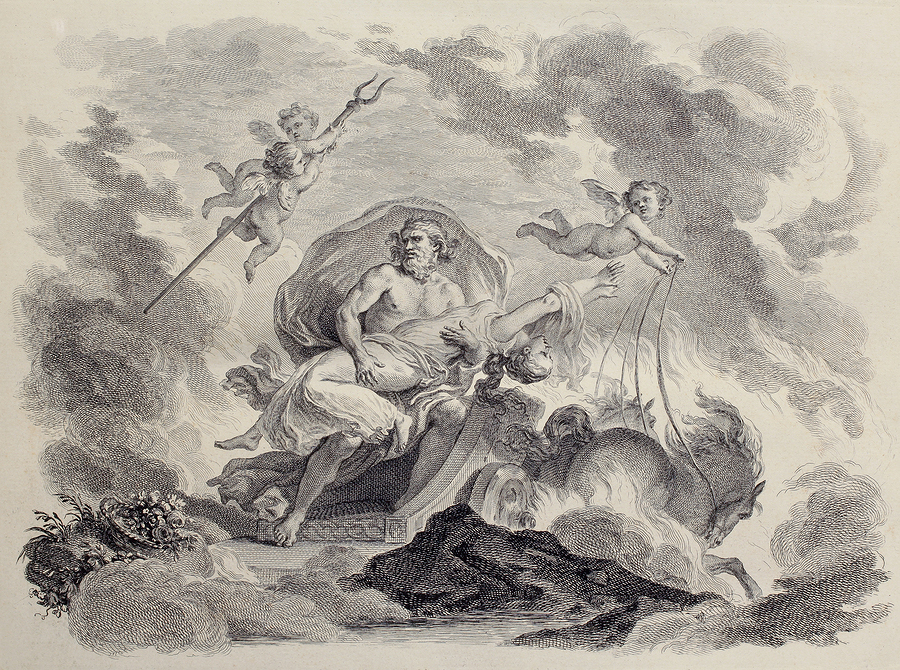
(Bigstockphoto.com)
[APPLAUSE].
[MUSIC. All Music (unless otherwise indicated) was performed Live by Stan Strickland and Syd Smart and was recorded Live at WGBH Boston by Jim Donahue.]
CURWOOD: That was Judith Black from Marblehead, Massachusetts, with the tale of Persephone and Demeter. Thanks for your storytelling, Judith.
BLACK: My pleasure.

Musician Syd Smart. (Photo: Syd Smart)
CURWOOD: Just ahead, we head to the vast snowy wastes of the Siberian tundra, for another myth of a strong and fierce god, and the need to please him.
PEARTREE: Ooooohhhhh! The old man sat in his hut, and he realized that Kutora, Lord of the wind was angry. He realized that if the Lord of the wind was not appeased, his people would perish. And so he looked at his elder daughter and said, "Daughter, you must go to Kutora and marry him. That's the only way to appease the winds."
Needless to say, it doesn't go well; to hear what does happen, stay tuned to Living on Earth!
[CUTAWAY MUSIC: Various Artists/Count Basie: “Good Morning Blues (The Real Tuesday Weld remix) from Christmas Remixed (Verve Records 2008)
Calming the Wind
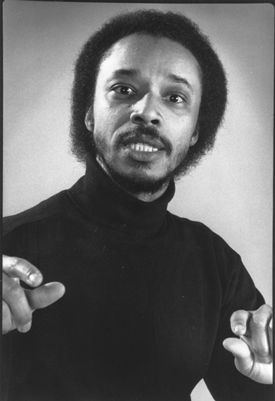
Storyteller Guy Peartree (Photo: Guy Peartree)
CURWOOD: It’s Living on Earth, I'm Steve Curwood, and this is our annual trip to the world of myth, fable, imagination, and stories told round the fire and handed down over generations to while away the long - oh so long! - winter evenings around the time of the solstice. We just heard one of the oldest and most familiar of tales - the Greek story of how winter came to the world - and our next fable also has an icy theme. We're returning to a favorite show from our archives that was recorded live, and celebrates this season.
[MUSIC All Music (unless otherwise indicated) was performed Live by Stan Strickland and Syd Smart and was recorded Live at WGBH Boston by Jim Donahue.]
CURWOOD: Our next storyteller is a history buff with a passion for folklore. Please welcome Guy Peartree.
[APPLAUSE}
PEARTREE: How do you do, Steve?
CURWOOD: Good. You know, I understand that one of your regular gigs is playing a 19th century African-American, or a couple of them, really, at a living history museum here in Massachusetts called Old Sturbridge Village.
PEARTREE: That's correct. Yes, they hired me to tell stories from the 1830s.
CURWOOD: So who do you play?
PEARTREE: One of the characters is Peter Clark, and the other character is William Brown from Providence. He's well known because he wrote an autobiography detailing how his master had slaves, sold slaves. His name was Moses Brown. And that Moses Brown became an abolitionist. He converted.
CURWOOD: He converted.
PEARTREE: Yes.
CURWOOD: But it's not the slavery of people we're talking about right now. It's going to be the slavery of winter time.
PEARTREE: The slavery of winter.
CURWOOD: Under all that wind and snow.
PEARTREE: Cold grips.
CURWOOD: And you have a story for us, right?
PEARTREE: Yes. It's called Kutora , Lord of the winds, from the nomadic tribe the Ninets of Siberia.
CURWOOD: Okay, well let's hear it then.
PEARTREE: All right. Kutora, Lord of the winds. The cold north winds blew across the tundra, their freezing winds bit into the land. Ooooohhhhh! The old man sat in his hut, and he realized that Kutora, Lord of the wind was angry. He realized that if the Lord of the wind was not appeased, his people would perish. And so he looked at his elder daughter and said, "Daughter, you must go to Kutora and marry him. That's the only way to appease the winds."
"But father, how will I find him?"
"Follow my instructions. Take your sled into the north wind. Go all the way up to the top of a hill. A little bird will come and perch itself on your shoulder. Stroke that bird gently. Take your sled all the way down to the bottom, where Kutora lives, enter the tent, and wait for him to come in, and follow his instructions exactly."
Well, the girl went out into the wind. She took her sled all the way up to the top of a hill. A little bird came to perch on her shoulder but she shooed the bird away. Then she took her sled all the way down to where Kutora lives. She went inside. But she didn't wait. She ate the meat and lay down and slept.
Kutora entered, a very strong, handsome man he was. "What are you doing here?"
She woke up. "I -- I have been sent by my father so -- so that you -- you will bring back the winds, and -- and I will marry you."
"Well, follow my instructions exactly. Take this meat to the old woman who lives in the snow, then bring back her gift. Then I will have hides here waiting, and you will sew them and make them into a coat and boots for me."

Russia’s Taiga Forest in winter. (Bigstockphoto.com)
Well, the girl went out into the snow, but she had no idea where the old woman lived. So she threw the meat to the side, and then she returned with an empty dish. She sat down immediately to sew the coat and to make the boots. But when Kutora came back, nothing was done to his specification. The boots were not done, the coat's not done. And so he got angry and he blew her into the wind. Whoooooh! And she landed in the snow. The howling winds continued over the Ninets' camp, and the father knew that his eldest daughter had not succeeded. So he said to his second daughter, "I want you to go and do what my first daughter has not been able to do. I want you to marry the Lord of the wind. And I want him to bring back the winds.
So the second daughter, as well, went out into the snow. But she did not heed her father's words, and she shooed the bird away. And when she got down to the very bottom of the hill she went into the tent of Kutora and she ate the meat and fell asleep. And likewise, she didn't follow his instructions. She went and took the meat and threw it into the snow, and came back, and did a very unpleasant job with the hides. And so Kutora was angry again and he blew her into the snow.
And again, the old man realized that his second daughter had not succeeded. So he went to the third daughter and he said, "My third daughter, please listen. It is up to you to save our people. Go and marry Kutora , follow my instructions exactly."
So the third daughter went out into the wind. She rode her sled up to the top of a hill. The little bird came, perched itself on her shoulder, and she stroked it gently. "Cooo." Off she went down the hill. She came to the big tent and she went inside and she waited patiently. Kutora entered and he said, "I see you have come here to marry me, haven't you?"
"Yes, I have."
"Well. Well, I want you to take this meat to the old woman who lives in the snow and bring it back with a gift inside. And then you will sew this coat that I want you to sew for me and these boots that I want you to sew for me with the hides that I have prepared here. I will come back at midnight."
So the girl went out into the snow. She took the meat. Now, she didn't know where to find the old woman, but the little bird came and showed her the way. She found herself in front of the old woman's hut, and she knocked on the door. (Knock, knock, knock) Out the old woman came. "What do you want?"
"Kutora has sent me. He has some meat for you."
"All right, dear." She took the meat inside and she put something on the plate and gave it to her. The little bird showed her how to get back to Kutora 's tent. When she arrived at the tent, Kutora smiled and said, "You're going to need those things. Those are the sewing tools for the coat and boots that I told you to make for me. I will be back at midnight."
The girl set to work. She was working very hard. She knew it was going to be impossible to make a coat and boots by midnight. But that old woman came in and she said, "Dear, look, there's something in my eye. Will you please get it out for me?"
She went over to the old woman and she got the thing out of the old woman's eye. And the old woman said, "Dear, would you look into my ear? There's something in there that you should see." And to her surprise, there was a maiden in there. "Take her hand, dear, and bring her out." The girl took the maiden's hand and she came out of the old woman's ear. And another girl came out, and another, and another. Altogether there were 4 young maidens, and they set about making the coat and boots for Kutora . They worked very, very easily, and they made a perfect coat and boots for Kutora, Lord of the wind. They jumped back into her ear, and the old woman, she slowly went out of the tent saying, "You're a very nice girl. A very wise and gentle girl."
Kutora came back and saw that his coat and his boots were made to perfection, and he laughed, and he smiled, and he said, "Now we will be married." And so that day, Kutora the Lord of the winds pulled back the winds. The old man came out of his tent. He looked up at the sky and he smiled because he knew his third daughter had succeeded. Kutora had taken back the winds. He had been appeased. And his people were saved.
[MUSIC; APPLAUSE]
CURWOOD: Thank you. That's Guy Peartree with Kutora, Lord of the wind. Now, both you and Judith Black told us very different stories, but I wonder if you see any parallels between them.
BLACK: You should always subcontract your leather work.
[AUDIENCE LAUGHS]
PEARTREE: We should always have maidens inside our ears. Yes, well, I think there is a gentle relationship, in that the fact that women are both part of the story, young women, whose beauty or their effectiveness is related to an element of nature. So on the surface, yes, there is a relationship between the two stories.
BLACK: Well, and that both women represent fertility. I mean, the old woman who lived in, you know, the old woman of the woods, however she was referred, and Demeter, are both what give us life. And also the need for some kind of sacrifice, you know, or knowledge of the deity, in order to negotiate your relationship. But obviously, where they're both placed determines an enormous amount about the folklore around them, you know, that the cold is the determining factor in Siberia so that people relate to the wind. And then, the loss of the fertility in Greece is what the story developed around because that's what caused them wonder and terror.
CURWOOD: And the lesson here for us is we have to redeem ourselves to escape winter.
PEARTREE: Well, I think you should respect nature, whether it's in the form of Demeter or the form of Kutora . Things have to be done so that nature receives her due, or his due, depending on who you are.
BLACK: Right. And given that, to know that there will be a full cycle.
PEARTREE: Yes.
BLACK: A very funny thing happens. Whenever you tell these stories, children always say, "Is this a story, or is this what really happened?" And you're faced with the idea of, what's the difference between science and folklore? I'm not sure.
CURWOOD: Thank you both. Guy Peartree and Judith Black.
Ant and Bear Dance
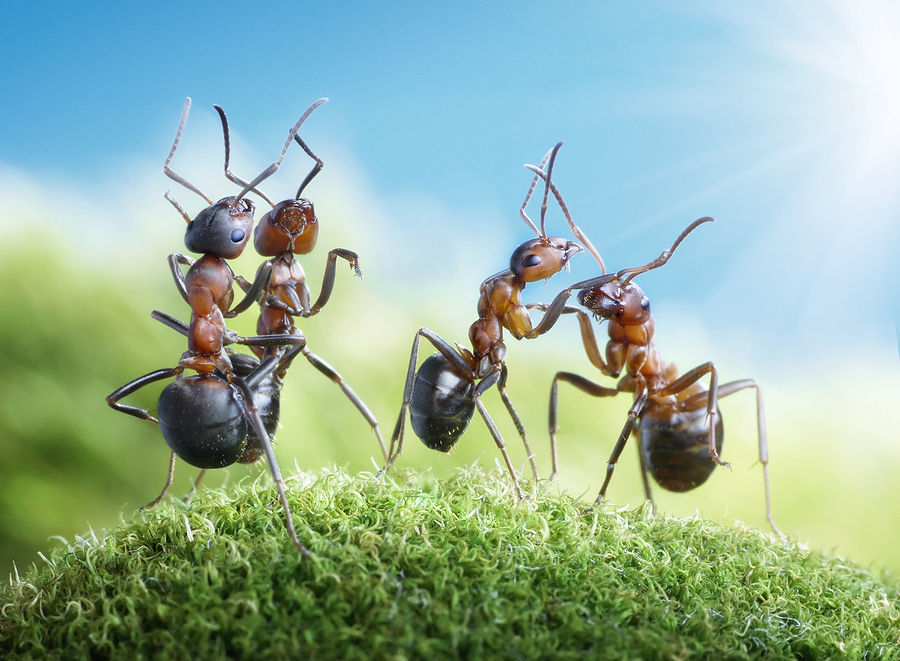
Ants “dancing.” (Bigstockphoto.com)
CURWOOD: The concept of night and day is the subject of our next story. It's the tale of an ant and a bear who have different ideas on how to divide the night from the day. Our storyteller is Dovie Thomason a Lakota Kaiwa Apache storyteller and cultural educator based in Virginia. Her latest recording is called Lessons from the Animal People. Welcome, Dovie Thomason.
(Applause)
CURWOOD: Now, your story is Ant Dances for Light. Is this Lakota or a Kaiwa story?
THOMASON: It was a story told to me by my Kaiwa Apache grandmother, but she would borrow stories from Nova Scotia or the Yukon. To me it's just grandma's story.
CURWOOD: Well, let's hear it, then.
THOMASON : In the beginning times the Earth was not as we know it today, for it was an Earth of darkness. Dark and cold covered this earth in all directions, and it was a difficult Earth for the animals who lived upon her. In the darkness they could not see each other. So it was those animals with eyes that could see in the dark, those animals who were sharp of tooth and claw who did well on this earth, and the others? They were the hunted. That was their place. They were the meat. And they were afraid in this dark world. They hid, they ran, but they could not spend their lives hiding and running. They wanted something else. They wanted a difference in this earth. But they could imagine nothing but the darkness that was their world. There were other problems. In this world of darkness the animals crashed into each other, stepped on each other, tangled with each other -- oop! Augh! Ow! Ooh! Who's on my paw? Who's that antler, get that antler -- who did that? That hurt! Ow! Ooh! Ow! Soon, they were arguing. There was trouble with the planet. There were troubles with the animals who lived in this place. They fought, who was doing what to who? Whose sharp toe? Whose claw was that? And there was trouble, trouble, in this dark place. There had to be another way. But they could not conceive of it.
So they went to the maker of this place. They went to the maker and asked that he could rethink this creation. Something was missing. They wanted something, they did not know what. The maker looked at them. "You cannot imagine. There is something else. You cannot imagine it. It is called light. It will bring warmth. You will be able to see." Oh, to some of the animals, this sounded so good. The birds having wings knew that they -- they could do something with them if they could but see. This world of light, it sounded good to them. But then the great animals, the hunters, stood. It was bear who spoke for them. "I want no light. I want the dark. I like the night."
And now the animals began arguing again. The birds spoke out for light. "We want to fly! We want this light. We want the light," but other birds turned on their own. "We don't want it. We like the dark." It was owl and nighthawk, those hunters of the night. They were happy with the Earth as it was, and soon all of the creatures of this Earth were arguing before their very maker.
He raised his hands. "There must be a solution. An Earth of light. An Earth of dark."
And suddenly a little voice spoke out before him. It was Ant. "Could -- could there not be dark and light? I can almost imagine color. Color. We would see in light. There would be goodness in both dark and light. Could we not have both?"
Bear looked down at her. "I don't want it! I don't like it! I don't want to see it. I like dark!"
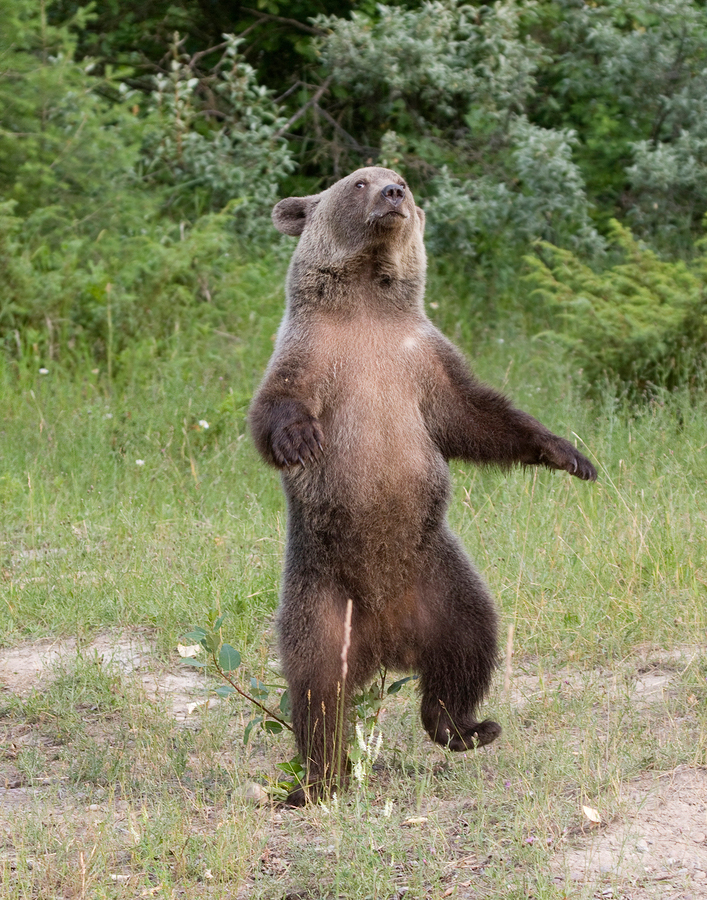
A bear “dancing.” (Bigstockphoto.com)
And before the argument could erupt again the Maker raised his hands and said, "This must be settled fairly. We will settle this as many things have been settled, with a dance contest." (Audience laughter) "There will be dancing and the winner, the one who creates the greatest, strongest, dance, the one who stands at the end of the dance, that is the way it will be. Bear, you will dance for dark." And Bear pulled himself up tall. "And I see none who truly want an Earth of only light." And they did not. They could not imagine this. What if they changed for something much worse? "And Ant, will you dance for dark and light?" And she agreed.
And so all the animals began to prepare for this great contest. They prepared the food, for each contest is ended with feasting, where all hard feeling is lost in the joy of the feast. And Bear prepared to dance as he prepares to do everything: he ate. And ate. And ate. He ate so much the animals preparing for the feast thought there would be none left for the feast. And he ate, and ate. While Ant prepared in a different way. She sat and folded her hands. She prayed. She fasted. She sipped only of pure water.
Bear had eaten enough. He was ready to dance. He stood. The animals looked up at him. He was big. He was strong. He took his first step. "I am Bear! I dance for Night! I want the dark, I want no light! I am Bear, I dance for Night!" And his dance was strong. The animals watched and thought ooh, we are going to live in darkness. (AUDIENCE LAUGHTER) And then it was Ant's turn. She stood, they looked at her. Tiny before them, she pulled her belt tight, and she began to dance. She danced for dark. She danced for light. She danced for day, she danced for night. She danced for peace among all people, and that everyone would get what they need. And then she sat and the animals thought: that was -- different. But it was strong. It was beautiful. It was graceful, but -- then Bear stood up, he had been eating all this time, and he was huge! "I am Bear!" And Earth shook under his feet and the animals shook, thinking of the darkness that would be their home forever. "I dance for Night! I want the dark, I want no light! I am Bear, I dance for Night!"
Ant had been fasting. Ant had been praying. She stood, she was lightheaded and dizzy. She tightened her belt against her hunger. And she danced. She danced for dark, she danced for light, she danced for day, she danced for night. She danced for peace among all people, and that everyone would get what they need. And the people smiled. It was good, this dance, it was strong, this dance. Perhaps it could be as she was dancing, as she was praying, but then Bear stood. He'd been eating still more. His belly was like a boulder in front of him. "I am Bear! Uuhhh..." (AUDIENCE LAUGHTER)
And he fell forward with a great crash! And soon was snoring. The animals cheered. The Earth was going to change. Ant had won. She didn't need to dance again, but she did. She danced for dark, she danced for light, she danced for day, she danced for night. She danced for peace among all people and that everyone would get what they need. Now, when we see the ants today, the ones I grew up with, their bodies are black and red, the color of the night, and the colors we can only see in light. And we all notice their tiny waists.
CURWOOD: Dovie Thomason , the story you just told us, Ant Dances for Light, this just isn't about how day and night were divided, is it? But it's a lesson on moderation?
THOMASON: The lessons for the stories I've been told are what we each take away from them. For me, it's a story about the power of small things and that each of us have our own needs, and that somehow we have to accommodate those and respect them.
[MUSIC]
CURWOOD: Well thank you. Coming up – tracking down the real changes in how animals adapt to these cold short mid-winter days.
FERNANDES: Things like fish that live in ponds really can't migrate, or a lot of small aquatic invertebrates or toads and things. The biggest problem they face is how to avoid freezing, since they really can't go anywhere. They produce a certain chemical in their blood called glycerol, which is much like antifreeze. And what it does is it lowers the freezing temperature of their body tissues, which is composed primarily of water. And by having antifreeze or this glycerol in their body, their cells won't burst. Much like you put antifreeze in your car radiator so your radiator fluid doesn't freeze over.
CURWOOD: Anti-freeze, blubber, hibernation and other winter strategies; and playing music to entertain the animals - that's all ahead so - keep listening to Living on Earth!
[MUSIC]
ANNOUNCER: Funding for Living on Earth comes from the Grantham Foundation for the protection of the environment. Supporting strategic communications and collaboration in solving the world’s most pressing environmental problems. The Gordon and Betty Moore Foundation. The Kendida Fund, furthering the values that contribute to a healthy planet. And Gilman Ordway for coverage of conservation and environmental change. This is PRI, Public Radio International.
[CUTAWAY MUSIC: Charles Brown: “Silent Night” from Cool Christmas Blues (Bullseye Blues records 1994).]
Animal Winter Behavior
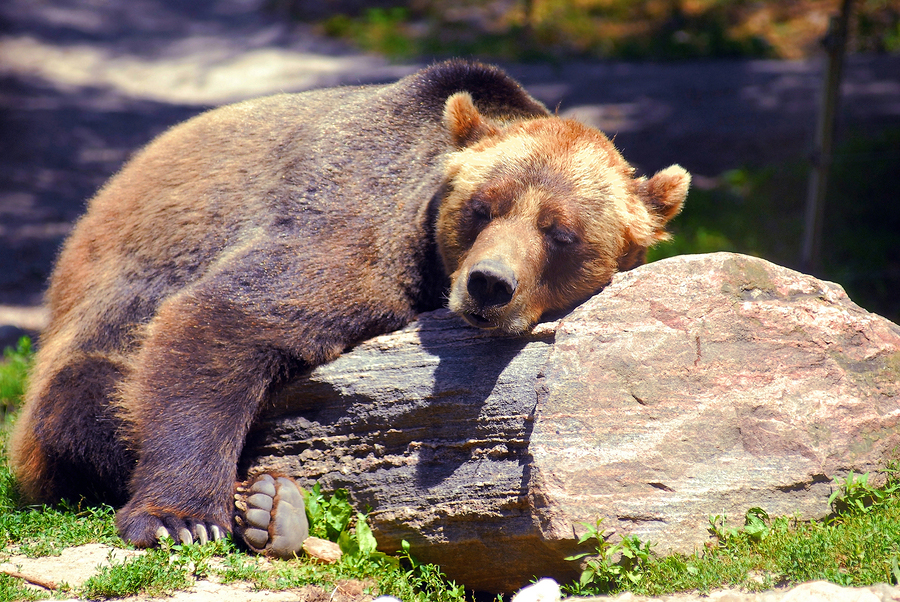
A bear takes a nap on a sunny rock. (Bigstockphoto.com)
CURWOOD: It's Living On Earth, I'm Steve Curwood. We return now to the final segment of our encore presentation, a live program, recorded at WGBH, Boston.
We welcomed zoologist Donna Fernandes, now President of the Buffalo zoo.
[AUDIENCE APPLAUSE)]
CURWOOD: Donna, you're a zoologist. Tell me: do ants and bears really dance?
FERNANDES: Well, I must admit, ants and bears aren't known for their dancing abilities as much as some other species. Honeybees dance to communicate food to other members of their hive, and there are very elaborate courtship dances in a number of bird species and even scorpions do somewhat of a waltz during mating. So there are species who are better dancers than bears and ants.
CURWOOD: But they do get ready for the cold, dark winter.
FERNANDES: Oh, absolutely.
CURWOOD: What happens?
FERNANDES: Well, in response to decreasing day length or shortening days and colder temperatures, animals in this area adopt one of 3 strategies. They can migrate, just leave the area completely; hibernate; or they can develop certain characteristics that make them able to resist the cold much better.
CURWOOD: Mm, let's start with hibernation. I want to try that right now. In fact, I really wished I could have stayed in bed this morning. I want to sleep longer. So in honor of our bear, maybe we could talk about that.
FERNANDES: Right. In the winter, I think all of us hate getting out of bed. It's often still dark out. That cold floor to put your feet on in the morning isn't very comfortable. We may sleep a little longer, but bears really sleep the whole winter away. They spend about 100 days in their den without eating anything, in a sort of semi-sleeping state. And not only do they not eat, but they lower their body temperature by several degrees, and their metabolic rate decreases to about half the normal rate.
CURWOOD: Wow. So why do this? I mean, what's the advantage of such changes?
FERNANDES: Well, by lowering your body temperature and your metabolic rate, you can get by with a lot fewer calories, so they can burn up that stored fat much more slowly. And this is the only way they can survive without eating, because there really isn't much to eat for a bear during the winter months.
CURWOOD: Uh huh. It's a diet plan in other words.
FERNANDES: Sort of, yeah. (AUDIENCE LAUGHTER)
CURWOOD: But, I mean, are they really hibernating? I mean, you're not supposed to go near a hibernating bear, right?
FERNANDES: Right. They are still capable of a certain amount of coordinated body movements. So if you do disturb a sleeping bear, they will wake up and they can retreat or attack. There are other animals which are what are called true hibernators or deep hibernators, and they go into a completely comatose state. Things like a lot of our rodents from around here, ground squirrels, chipmunks, prairie dogs, those kinds of things. They'll lower their body temperature to just a few degrees above freezing. So if you find one it will be very cold to the touch. And their metabolic rate is about 10% of normal rate. Something like the Arctic ground squirrel, the heart rate goes from about 100 to 200 beats per minute to 10 to 20 beats per minute, and breathing goes from about 100 breaths per minute down to 4 breaths per minute. So they're in a very slumber-like, slow, frozen state.
CURWOOD: Of course, now, this time of year I do like to sleep late, but I even prefer to go, like, south, you know, Florida, Caribbean, you know, something like that. It's even better, right?
FERNANDES: Well, migration's a very common strategy, particularly among our birds. In this part of the world, in the United States and Canada, fully two thirds of the birds that breed here migrate south for the winter, either to our southern states, Mexico, or Central or South America. And probably some of the most remarkable things are the distances that they travel.
CURWOOD: For example?
FERNANDES: Well, the Arctic tern is the most famous. They breed in the Arctic Circle during the summer months, and then when winter approaches they fly all the way down to Antarctica and then back again in the spring. It's a round trip of 22,000 miles. By doing this they actually spend about 9 months of their time in perpetual light. So they're probably the one animal that would have argued on the case of light in that previous story. They like a lot of light. But even things as small as the monarch butterfly, which weighs about 1/100th of an ounce, they've been tagged in Canada and found to fly all the way down to Mexico for the wintering site, a distance of about 2,000 miles.

CURWOOD: Now aside from the birds and these butterflies, who else likes to migrate in the animal kingdom?
FERNANDES: Well, certain bats will migrate, and some of our larger mammals like caribou or reindeer. And in the past we had huge herds of bison or American buffalo, and they used to migrate great distances. And probably a very well known group is whales, who will migrate from north to south in the winter.
CURWOOD: Now, you mention that some animals, I mean, those who don't sleep or those who don't catch a jet south, develop some sort of resistance.
FERNANDES: Right. Things like fish that live in ponds really can't migrate, or a lot of small aquatic invertebrates or toads and things. They have -- the biggest problem they face is how to avoid freezing, since they really can't go anywhere. They produce a certain chemical in their blood called glycerol, which is much like antifreeze. And what it does is it lowers the freezing temperature of their body tissues, which is composed primarily of water. And by having antifreeze or this glycerol in their body, their cells won't burst. Much like you put antifreeze in your car radiator so your radiator fluid doesn't freeze over.
CURWOOD: And finally, like so many of us, I guess that the animals really do pack it on in the winter. They don't have the diet plan of the bear, though.
FERNANDES: Right. Another strategy is better insulation. You can do that through a thicker fur coat, which a lot of mammals do get a thicker winter coat. Or you can do it by a thicker layer of fat, which provides insulation and so aquatic mammals, which don't have much fur, get that layer of blubber. I think in humans, though, we gain weight not because we want greater insulation as we're trying to -- we're escaping the release of having to look good in a bathing suit. So I think we allow ourselves to get a little heavier in the winter because we don't have to look so good any more.
CURWOOD: Thank you. Donna Fernandes is associate curator for the Wildlife Conservation Society in New York City.
Playing for Animals and Humans

Musician Stan Strickland (Photo: Stan Strickland)
CURWOOD: Donna, I want you to stick around while we talk to Stan Strickland, who's been making the music here for us today. And he's also been trying to spread his message to the animal kingdom, I mean literally. Now you used to work at Boston's Franklin Park Zoo. You're not allowed to feed the animals there but I understand, Stan, you have been playing to the animals. How did that gig come about?
STRICKLAND: Colleen Kelley, who works with the zoo, had this idea that the animals needed to have a little entertainment, something to break up the boredom from looking at all these silly people. (AUDIENCE LAUGHTER) So she started a series of music performances and I was asked to do one.
CURWOOD: Hmm. So, how did the animals respond to all this?
STRICKLAND: Well, it's kind of interesting. You know, you don't really know what an animal is thinking. You have to kind of project. I played for 3 different animals. The first was zebras.
CURWOOD: Can you show me what you played for the zebras?
STRICKLAND: Well, I had my trusty soprano saxophone. And in the very beginning it was a photo shoot to sort of give some publicity. So we just pretended to play -- I was blowing air sort of like (SOUND OF AIR ESCAPING). And just to make sure they wouldn't get too spooked out. But they seemed to not mind our being there, so we started playing a little bit, a little bit like... (SAX AND DRUM BEATS) Then we went over to and met Koby. You must know about Koby.
CURWOOD: Oh, the gorilla. I've met him, and Kiki, too, there.
STRICKLAND: And Kiki. Koby is really pretty cool. At first, Koby was back somewhere, we couldn't see him. And Kiki was out sort of bathing in the sun. So I gave out a big call on the saxophone to see if I could get his attention, like: (TREMOLO ON SAX) And Koby kind of walks out like Yo, what's up man? (AUDIENCE LAUGHTER) Really. (GRUNTS) And one thing I learned, though, about at least the gorillas is that one of their ways of communicating is by throwing things, right? (AUDIENCE LAUGHTER) And they throw whatever is around, so there are 2 areas of the Franklin Park Zoo for the gorillas. The outside area, there's some branches and some things, and occasionally Koby would throw some branches. But when we went inside, the other male gorilla, what's his name?
FERNANDES: Vip.
STRICKLAND: Vip.
FERNANDES: Yeah.
STRICKLAND: Vip looks like of mean to me.
FERNANDES: Yeah, he'll throw something else. (AUDIENCE LAUGHTER)
STRICKLAND: Yeah. So I was there the 2 times with musician friends Bob Moses, a drummer, and the second time with Wesley Wirth. So Wesley and I had seen Koby throw stuff. So when we went inside, Vip?
FERNANDES: Vip.
STRICKLAND: Vip was like standing there and he reached down to grab something to throw, and Wes and I knew it was coming, so we kind of like, kind of ducked a little bit. And unfortunately some of the other people in the audience didn't quite know what was happening, and as Vip sort of tossed little gorilla poop out (AUDIENCE LAUGHTER) it kind of splattered on a little girl's leg, and that was kind of yucky. (AUDIENCE LAUGHTER)
CURWOOD: Sort of a sour note, huh?
STRICKLAND: Yeah, yeah.
CURWOOD: Is there a tune that they seem to like?
STRICKLAND: Oh yeah, so, we kind of played something like this for Koby: (LIVELY SAX AND PERCUSSION)
(AUDIENCE APPLAUSE)
CURWOOD: That was a great concert for them. Donna, is there any way to tell whether the animals really liked the music that Stan was playing?
FERNANDES: Well, I think probably the most positive sign is that the animals generally approached the exhibit barriers to try to get as close to the musicians as possible. It's still hard to decide whether that's just a novel situation or a novel noise and they're curious, or whether they actually like it. But if the musicians continue to come and the novelty wears off, yet they still approach the barriers, I think it suggests that they really do enjoy the music.
CURWOOD: Well thanks for playing what you did for the animals, Stan. I'm wondering if you could play something for us, now? I think it would be appropriate for us to honor the winter spirits and call for the return of the sun, huh?
STRICKLAND: Okay. For you human animals, we're going to do an African, a West African welcoming song. And this song is to help us welcome the sun back. So we want everyone to sing with us, okay? It's called Afunga Alafia... (DRUM BEATS) Afunga alafia, ashay ashay. Afunga alafia, ashay ashay... and a wa wa wa wa wa wa wa, and a wa wa wa wa wa wa wa... Afunga alafia, ashay ashay... (etc.) A ya ya yo! (AUDIENCE REPEATS) A ya ya yo! ... Ha! ayay (AUDIENCE REPEATS) (etc.)
[MUSIC: Show Close: Stan Strickland/Josh Rosen “Slowdance” from Instinct (Self Released disc 2011)]
CURWOOD: The Living on Earth Winter Solstice special was recorded live at WGBH, Boston. It was directed by Margo Stage and recorded and mixed by Jim Donahue. I'd like to thank all our guests - and you can learn more about them at our website, LOE dot ORG. And you can hear this program anytime at our web-site - again that's LOE dot ORG. And don't forget to like us on facebook at PRI's Living on Earth. Our crew for the live recording included Chris Ballman, Kim Motylewski, and George Homsy. Living on Earth is produced by the World Media Foundation. Our technical director is Jeff Turton. Our managing producer is Helen Palmer I'm Steve Curwood. And happy holidays from all of us here at Living on Earth. Thanks for listening.
ANNOUNCER: Funding for Living on Earth comes from Stonyfield Farm, makers of organic yogurt, smoothies, and more. Stonyfield invites you to just eat organic for a day. Details at just eat organic dot com. Support also comes from you, our listeners. The Go Forward Fund and Pax World Mutual and Exchange Traded Funds, integrating environmental, social, and governance factors into investment analysis and decision making. On the web at Pax World dot com. Pax World, for tomorrow.
ANNOUNCER 2: PRI, Public Radio International.
Living on Earth wants to hear from you!
Living on Earth
62 Calef Highway, Suite 212
Lee, NH 03861
Telephone: 617-287-4121
E-mail: comments@loe.org
Newsletter [Click here]
Donate to Living on Earth!
Living on Earth is an independent media program and relies entirely on contributions from listeners and institutions supporting public service. Please donate now to preserve an independent environmental voice.
NewsletterLiving on Earth offers a weekly delivery of the show's rundown to your mailbox. Sign up for our newsletter today!
 Sailors For The Sea: Be the change you want to sea.
Sailors For The Sea: Be the change you want to sea.
 The Grantham Foundation for the Protection of the Environment: Committed to protecting and improving the health of the global environment.
The Grantham Foundation for the Protection of the Environment: Committed to protecting and improving the health of the global environment.
 Contribute to Living on Earth and receive, as our gift to you, an archival print of one of Mark Seth Lender's extraordinary wildlife photographs. Follow the link to see Mark's current collection of photographs.
Contribute to Living on Earth and receive, as our gift to you, an archival print of one of Mark Seth Lender's extraordinary wildlife photographs. Follow the link to see Mark's current collection of photographs.
 Buy a signed copy of Mark Seth Lender's book Smeagull the Seagull & support Living on Earth
Buy a signed copy of Mark Seth Lender's book Smeagull the Seagull & support Living on Earth

